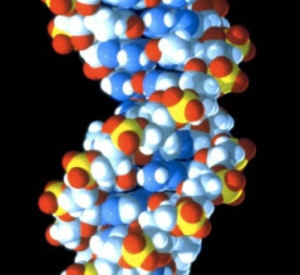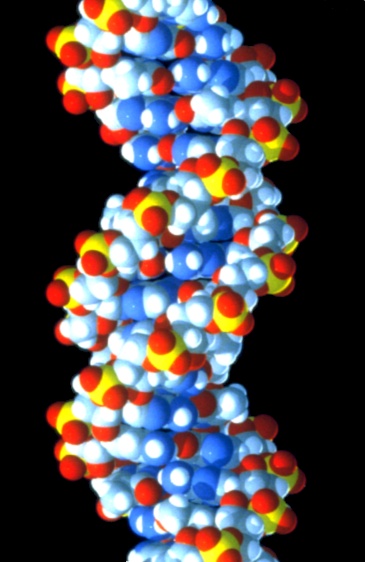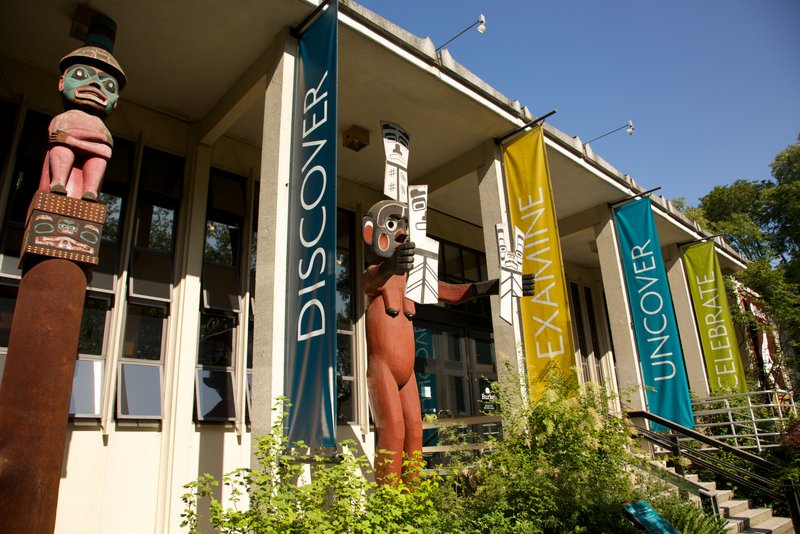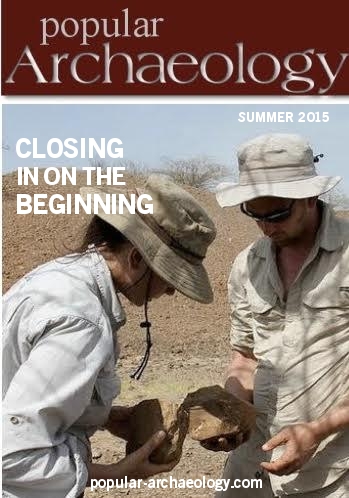
The controversial 8,500-year-old skeletal remains of the adult man popularly known as Kennewick Man, first discovered in a bank of the Columbia River near Kennewick, Washington in 1996, is now said by geneticists to be closely related to modern Native Americans—and more specifically, to the Confederated Tribes of the Colville Reservation in Washington.
This was the conclusion of an international collaborative study recently conducted by scientists at the University of Copenhagen and the Stanford University School of Medicine.
Led by Lundbeck Foundation Professor Eske Willerslev and postdoctoral scholar Morten Rasmussen of the Centre for GeoGenetics, University of Copenhagen, and working with Carlos Bustamante, professor of genetics with the Stanford University Medical Center, the researchers removed small samples of bone from the skeleton’s hand to perform an exhaustive DNA analysis. Willerslev and Bustamante are well-known for their studies of ancient DNA. Willerslev and Rasmussen recently published the genome of a young child, known as the Anzick boy, buried more than 12,000 years ago in Montana. That study showed that the boy was also closely related to modern Native American groups, in particular those of South and Central America. In 2012, Bustamante and colleagues used DNA from the 5,300-year-old Iceman mummy called Otzi to show the man likely hailed from the Mediterranean island of Sardinia rather than the frigid Alps, where his body was found.
Regarding this latest analysis of Kennewick Man, said Rasmussen: “Although the exterior preservation of the skeleton was pristine, the DNA in the sample was highly degraded and dominated by DNA from soil bacteria and other environmental sources. With the little material we had available, we applied the newest methods to squeeze every piece of information out of the bone.”
The researchers compared the DNA sequences from the skeleton with those of modern Native Americans. They concluded that, although it is impossible to assign Kennewick Man to a particular tribe, he is closely related to members of the Confederated Tribes of the Colville Reservation in Washington.
Said Willerslev: “Comparing the genome sequence of Kennewick Man to genome-wide data of contemporary human populations across the world clearly shows that Native Americans of today are his closest living relatives. Our study further shows that members of the Confederated Tribes of the Colville Reservation that belongs to the Claimant Plateau tribes of the Pacific Northwest, who originally claimed him as their ancestor, is one of the groups showing close affinities to Kennewick Man or at least to the population to which he belonged.”
______________________________________
 The DNA molecule, the blueprint unit for all life forms. Wikimedia Commons
The DNA molecule, the blueprint unit for all life forms. Wikimedia Commons
____________________________________________________
 The Burke Museum is the court-appointed neutral repository for the remains of Kennewick Man, also known as The Ancient One. The museum doesn’t display the remains, but has been caring for Kennewick Man since 1998. Courtesy of Richard Brown Photography
The Burke Museum is the court-appointed neutral repository for the remains of Kennewick Man, also known as The Ancient One. The museum doesn’t display the remains, but has been caring for Kennewick Man since 1998. Courtesy of Richard Brown Photography
______________________________________________________
This latest finding challenges a recent 2014 study that included isotopic, anatomical and morphometric analysis. That study concluded that Kennewick Man resembles circumpacific populations, particularly the Japanese Ainu and Polynesians and also has certain ‘European-like morphological’ traits, and reinforced the claim that he was anatomically distinct from modern Native Americans. However, that study did not include DNA analysis.
However, in addition to this latest DNA analysis, researchers also re-examined the earlier data from the 2014 cranial morphology study. Professor Christoph Zollikofer and Dr. Marcia Ponce de León from the Anthropological Institute, University of Zurich are world-leading experts on cranial analyses. They concluded the following:
“We started with the observation that cranial variation within human populations—both past and present—is high, and that it is typically higher than variation among populations. One important consequence of this is that, for single individuals such as Kennewick Man, cranial data do not reliably indicate population affiliations. In fact, drawing reliable inferences requires hundreds of independent features—precisely the kind of information that is now available through the new genomic analyses.”
When Kennewick Man was discovered in 1996, initial cranial analysis suggested that he was a historic-period Euro-American. Later radiocarbon dating of the bones revealed an age of ca. 8,000-9,000 years BP, making him pre-Columbian in age. This sparked a legal battle over the disposition of the skeletal remains. Tribes inhabiting the region where Kennewick Man, who they call the ‘Ancient One’, was found, requested the remains to be turned over to them for reburial based on their claim that he was Native American and therefore ancestral to them. The U.S. Army Corps of Engineers, which managed the land where the skeleton was found, was prepared to do so. However, this was blocked by a lawsuit by eight scientists questioning his Native American origins and generated a scientific stir related to Kennewick Man’s ancestry and affiliation. The lawsuit lacerated the anthropological community, badly damaged relations with Native American groups, and triggered a divisive, long-running and expensive legal tug of war that ended in 2004 with a ruling in favour of a more detailed study, the study that was finally published in 2014.
But the latest analysis may finally bring the controversy and the battle to an end, thanks to advances in genetic research.
“Advances in DNA sequencing technology have given us important new tools for studying the great human diasporas and the history of indigenous populations,” said Bustamante. “Now we are seeing its adoption in new areas, including forensics and archeology. The case of Kennewick Man is particularly interesting given the debates surrounding the origins of Native American populations. Morten’s work aligns beautifully with the oral history of native peoples and lends strong support for their claims. I believe that ancient DNA analysis could become standard practice in these types of cases since it can provide objective means of assessing both genetic ancestry and relatedness to living individuals and present-day populations.”
________________________________________________
Edited and adapted with material provided by the subject press releases of the University of Copenhagen and Stanford University Medical Center.
Stanford graduate student David Poznik is also a co-author of the study.
The research was supported by the Danish Council for Independent Research, the Consejo Nacional de Ciencia y Tecnología in Mexico, the National Science Foundation and a Marie Curie Intra-European Fellowship.
________________________________________________
 Read more in-depth articles about archaeology with a premium subscription to Popular Archaeology Magazine.
Read more in-depth articles about archaeology with a premium subscription to Popular Archaeology Magazine.
In addition, the latest Popular Archaeology ebook is now available.
______________________________________________
Travel and learn with Far Horizons.
____________________________________________
 Popular Archaeology’s annual Discovery Edition eBook is a selection of the best stories published in Popular Archaeology Magazine in past issues, with an emphasis on some of the most significant, groundbreaking, or fascinating discoveries in the fields of archaeology and paleoanthropology and related fields. At least some of the articles have been updated or revised specifically for the Discovery edition. We can confidently say that there is no other single issue of an archaeology-related magazine, paper print or online, that contains as much major feature article content as this one. The latest issue, volume 2, has just been released. Go to the Discovery edition page for more information.
Popular Archaeology’s annual Discovery Edition eBook is a selection of the best stories published in Popular Archaeology Magazine in past issues, with an emphasis on some of the most significant, groundbreaking, or fascinating discoveries in the fields of archaeology and paleoanthropology and related fields. At least some of the articles have been updated or revised specifically for the Discovery edition. We can confidently say that there is no other single issue of an archaeology-related magazine, paper print or online, that contains as much major feature article content as this one. The latest issue, volume 2, has just been released. Go to the Discovery edition page for more information.
____________________________________________







